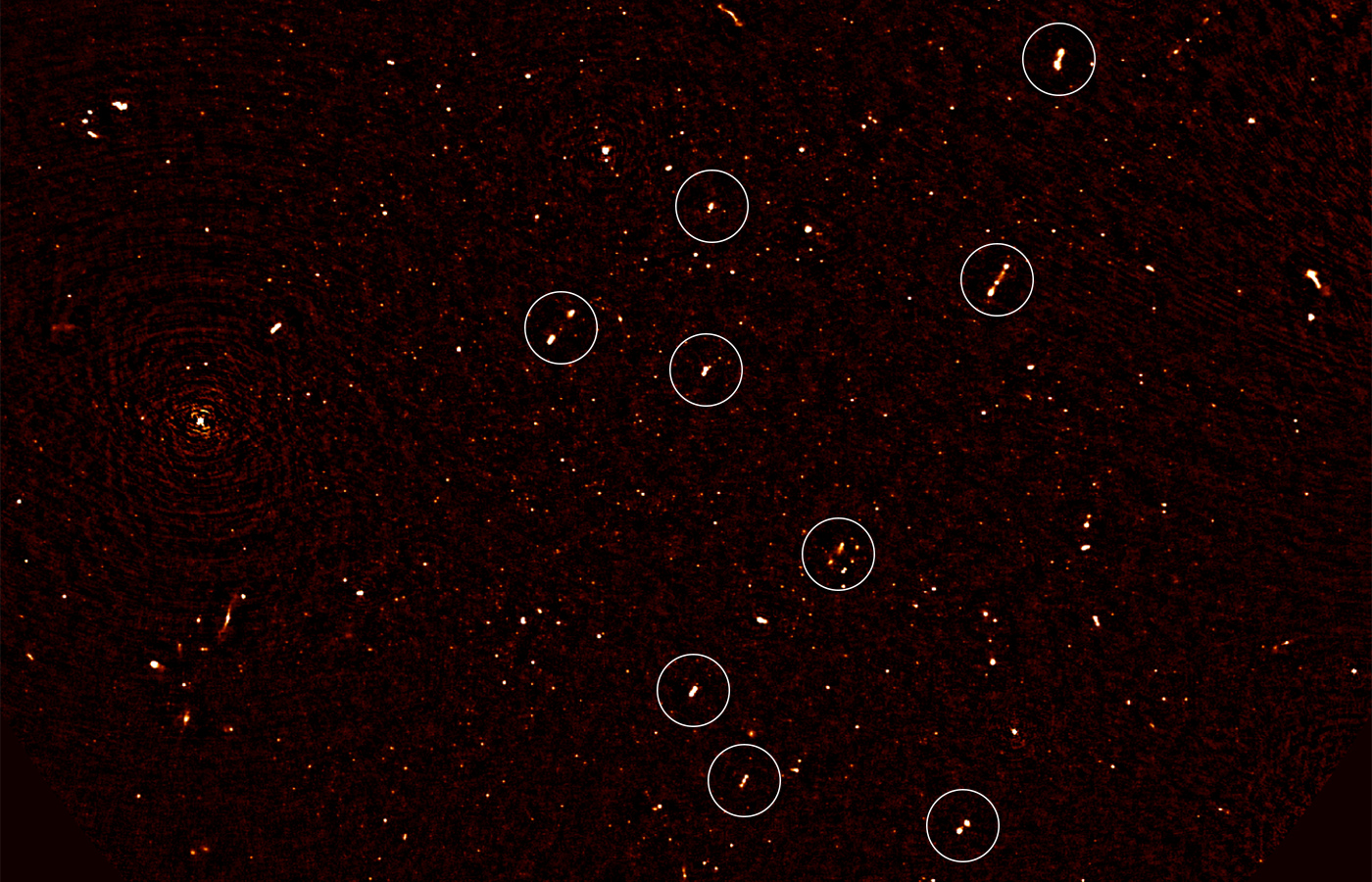A Glimpse Through a Cosmic Keyhole
A few weeks ago, I came across a preprint of a striking astronomy paper that none of my physicist friends seemed to be talking or tweeting about. The paper’s co-authors, Russ Taylor and Preshanth Jagannathan of the University of Cape Town in South Africa, had spent 300 hours observing a small patch of sky using India’s Giant Metrewave Radio Telescope. The galaxies in this particular patch had been imaged before with optical telescopes, but the long-exposure radio image caught the galaxies in a surprising act.
The image revealed 65 “active” galaxies, meaning that they have jets of material streaming out in two directions, probably powered by the supermassive black holes spinning at the galaxies’ centers. (The jets emit radio light but typically aren’t visible at optical frequencies, which is why they hadn’t been seen before.) Remarkably, the jets of about a dozen of the galaxies, concentrated in a subregion of the field of view, can all be seen pointing in the same direction. “You can visually see it,” said Richard Battye, an astronomer and cosmologist at the University of Manchester who was not involved in the work. The alignment “is definitely there.”
In their paper, published in this month’s issue of Monthly Notices of the Royal Astronomical Society: Letters, Taylor and Jagannathan pinned the odds of the alignment’s arising by chance at just 0.1 percent. But according to the various experts I queried, it also seems unlikely that the alignment is a real effect — or at least it’s very unexpected. “It was certainly very surprising when I saw it,” said Romeel Davé, an astronomer at the University of the Western Cape in South Africa who does simulations of galaxy formation. “There is no obvious explanation for it, as far as I know.”
From Earth, the aligned galaxy jets appear huddled together in a small, moon-size patch of sky, but in fact they span many millions of light-years. There is no known mechanism capable of crossing the cosmic void between them and aligning the axes of rotation of their central black holes.
“The really interesting outcome,” Davé speculated, would be if the alignment “comes from some sort of global magnetic field.” In recent years, he said, astronomers have seen hints that large-scale magnetic fields may extend into the voids between galaxies. It’s unknown where a global magnetic field might have come from, or what it might tell us.
A new generation of powerful radio telescopes will soon come online, allowing faster surveys of much larger regions of deep space and more data to either confirm or explain away the observed alignment. Taylor is planning a series of observations using South Africa’s MeerKAT radio telescope, which will switch on in about a year.
He and Jagannathan have peeked through a cosmic keyhole and glimpsed a striking scene. A misleading one, possibly — or a sign of major revelations to come. “If it is true, it is really important,” Battye said. What surprises, I wonder, will the future of radio astronomy deliver?




